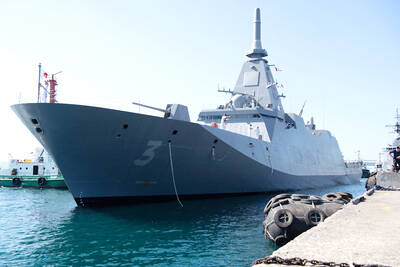Marine scientists from California are venturing this week to the middle of the North Pacific for a study of plastic debris accumulating across hundreds of kilometers of open sea dubbed the “Great Pacific Garbage Patch.”
A research vessel carrying a team of about 30 researchers, technicians and crew members embarked on Sunday on a three-week voyage from the Scripps Institution of Oceanography, based at the University of California at San Diego.
The expedition will study how much debris — mostly tiny plastic fragments — is collecting in an expanse of sea known as the North Pacific Ocean Gyre, how that material is distributed and how it affects marine life.
The debris ends up concentrated by circular, clockwise ocean currents within an oblong-shaped “convergence zone” hundreds of kilometers across from end to end near the Hawaiian Islands, about midway between Japan and the West Coast of the US.
The focus of the study will be on plankton, other microorganisms, small fish and birds.
“The concern is what kind of impact those plastic bits are having on the small critters on the low end of the ocean food chain,” Bob Knox, deputy director of research at Scripps, said on Monday after the ship had spent its first full day at sea.
The 52m vessel New Horizon is equipped with a laboratory for on-board research, but scientists also will bring back samples for further study.
Little is known about the exact size and scope of the vast debris field discovered some years ago by fishermen and others in the North Pacific that is widely referred to as the “Great Pacific Garbage Patch.”

Eleven people, including a former minister, were arrested in Serbia on Friday over a train station disaster in which 16 people died. The concrete canopy of the newly renovated station in the northern city of Novi Sad collapsed on Nov. 1, 2024 in a disaster widely blamed on corruption and poor oversight. It sparked a wave of student-led protests and led to the resignation of then-Serbian prime minister Milos Vucevic and the fall of his government. The public prosecutor’s office in Novi Sad opened an investigation into the accident and deaths. In February, the public prosecutor’s office for organized crime opened another probe into

RISING RACISM: A Japanese group called on China to assure safety in the country, while the Chinese embassy in Tokyo urged action against a ‘surge in xenophobia’ A Japanese woman living in China was attacked and injured by a man in a subway station in Suzhou, China, Japanese media said, hours after two Chinese men were seriously injured in violence in Tokyo. The attacks on Thursday raised concern about xenophobic sentiment in China and Japan that have been blamed for assaults in both countries. It was the third attack involving Japanese living in China since last year. In the two previous cases in China, Chinese authorities have insisted they were isolated incidents. Japanese broadcaster NHK did not identify the woman injured in Suzhou by name, but, citing the Japanese

YELLOW SHIRTS: Many protesters were associated with pro-royalist groups that had previously supported the ouster of Paetongtarn’s father, Thaksin, in 2006 Protesters rallied on Saturday in the Thai capital to demand the resignation of court-suspended Thai Prime Minister Paetongtarn Shinawatra and in support of the armed forces following a violent border dispute with Cambodia that killed more than three dozen people and displaced more than 260,000. Gathered at Bangkok’s Victory Monument despite soaring temperatures, many sang patriotic songs and listened to speeches denouncing Paetongtarn and her father, former Thai prime minister Thaksin Shinawatra, and voiced their backing of the country’s army, which has always retained substantial power in the Southeast Asian country. Police said there were about 2,000 protesters by mid-afternoon, although

MOGAMI-CLASS FRIGATES: The deal is a ‘big step toward elevating national security cooperation with Australia, which is our special strategic partner,’ a Japanese official said Australia is to upgrade its navy with 11 Mogami-class frigates built by Japan’s Mitsubishi Heavy Industries, Australian Minister for Defence Richard Marles said yesterday. Billed as Japan’s biggest defense export deal since World War II, Australia is to pay US$6 billion over the next 10 years to acquire the fleet of stealth frigates. Australia is in the midst of a major military restructure, bolstering its navy with long-range firepower in an effort to deter China. It is striving to expand its fleet of major warships from 11 to 26 over the next decade. “This is clearly the biggest defense-industry agreement that has ever